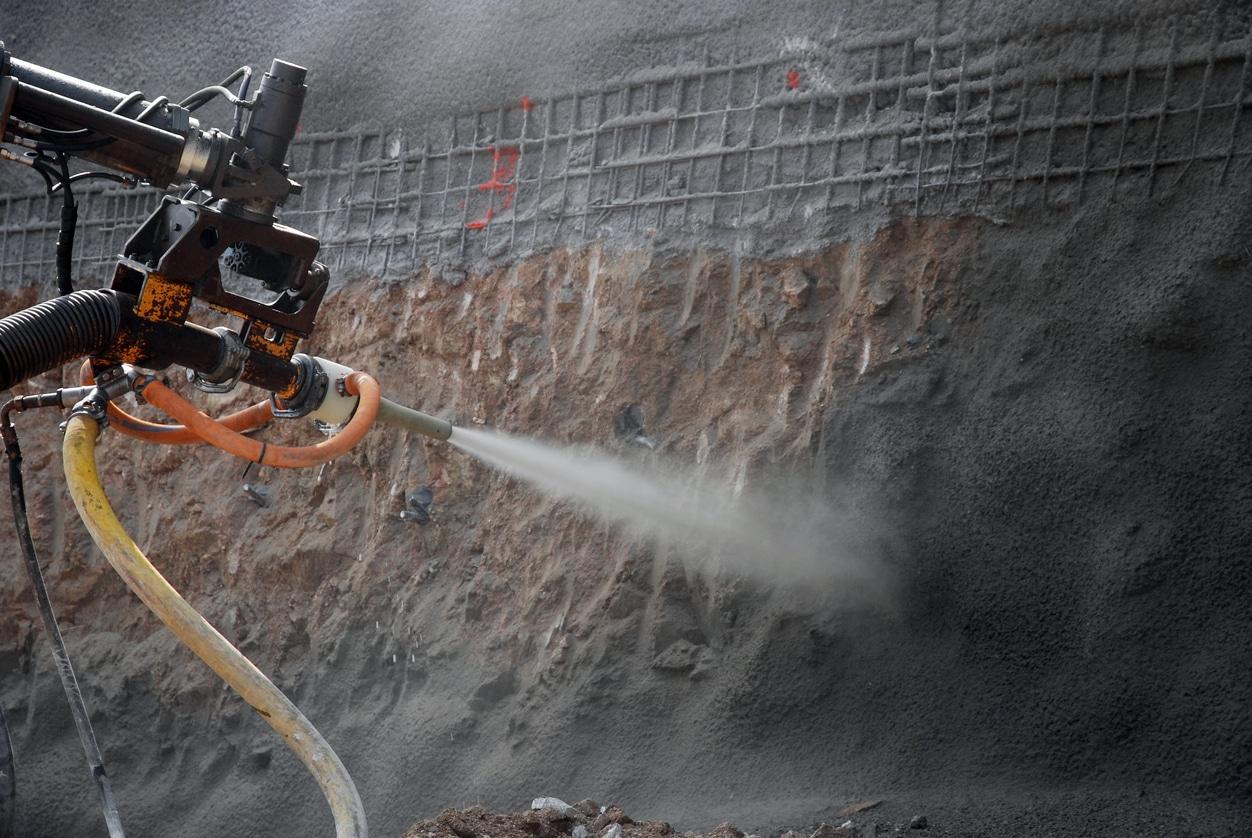Rock Bolt and Rock Seal: Essential Solutions for Underground Stability and Safety

Introduction
Underground mining and tunneling operations are among the most challenging engineering environments in the world. With constant geological pressures, unpredictable rock movements, and risks of rockfall, ensuring structural stability is non-negotiable. This is where technologies like rock bolts and rock seal step in.
Rock bolts act as the backbone of underground support systems, anchoring rock masses to prevent collapse, while rock seal adds a protective layer that reinforces stability and minimizes risks. Together, these solutions form a comprehensive approach to ground support—keeping miners safe and operations efficient.
In this blog, we’ll explore what rock bolts are, how they function, and why rock seal is an essential complement to bolting systems. We’ll also cover their applications, cost benefits, innovations, and real-world examples to illustrate how they work together to create safer underground environments.
What is a Rock Bolt?
A rock bolt is a long anchor rod inserted into drilled holes in rock formations to provide structural support. Once installed and fixed—often using grout or resin—the bolt binds fractured rock layers together, preventing displacement.
How Rock Bolts Work
-
Drilling: A borehole is drilled into the rock face.
-
Insertion: A steel rod (the rock bolt) is inserted.
-
Anchoring: Cementitious grout or resin is injected to bond the bolt to the rock.
-
Tensioning (Optional): In some systems, the bolt is tensioned to actively compress rock layers.
This process ensures that fractured rock layers behave as a single, stable unit rather than moving independently.
Applications of Rock Bolts
-
Mining: Stabilizing tunnels, haulage drifts, and stopes.
-
Tunneling: Securing crowns and walls in civil tunnels.
-
Civil Infrastructure: Supporting underground caverns, slopes, and dams.
Rock bolts are considered a frontline defense against rockfalls and cave-ins—protecting both lives and equipment.
Benefits of Rock Bolts in Underground Operations
-
Improved Stability: Bolts turn potentially unstable rock masses into reinforced structures.
-
Cost-Effectiveness: Compared to heavy steel arches or concrete linings, bolting is more economical.
-
Flexibility: Can be installed in various geological conditions, from hard granite to fractured shale.
-
Reduced Downtime: Safer tunnels mean fewer interruptions due to collapses or repairs.
-
Enhanced Worker Safety: By reducing rockfall hazards, bolts directly protect underground crews.
Introducing Rock Seal: The Surface Reinforcement Solution
While rock bolts secure rock masses internally, loose fragments on the rock surface can still present significant hazards. This is where Rock Seal plays a vital role.
Rock Seal is a specially formulated spray-on polymer liner designed to stabilize exposed rock surfaces. Once applied, it forms a strong, adhesive film that binds loose rock particles, prevents slabbing, and reduces the risk of rockfalls.
Key Features of Rock Seal
-
Surface Bonding: Holds smaller rock pieces in place.
-
Dust Suppression: Reduces harmful airborne particles during operations.
-
Moisture Resistance: Prevents water ingress that could weaken rock integrity.
-
Fast Application: Can be quickly sprayed, minimizing downtime.
In effect, Rock Seal acts as a protective “skin” over exposed rock, complementing the deeper reinforcement provided by rock bolts.
How Rock Bolts and Rock Seal Work Together
The true strength of underground support systems comes from layered protection:
-
Rock bolts provide deep reinforcement, binding fractured layers together.
-
Rock seal delivers surface protection, preventing small-scale hazards such as loose rock or dust.
Together, they address both internal and external stability challenges. This dual approach not only improves safety but also prolongs the life of underground structures by minimizing maintenance needs.
Cost and Performance Considerations
Project managers often weigh the cost of rock support systems against the risks of underground instability. Here’s how rock bolts and Rock Seal stack up:
Rock Bolt Costs Depend On:
-
Length and diameter of bolts.
-
Type of anchoring (resin vs. cement grout).
-
Ground conditions and drilling depth.
Rock Seal Costs Depend On:
-
Application thickness.
-
Size of exposed surface area.
-
Site-specific environmental conditions.
While both involve upfront investment, the long-term cost savings are substantial. Preventing a single tunnel collapse or minimizing downtime can save millions in lost productivity.
Case Study: Rock Bolt and Rock Seal in Action
At a gold mine in southern Africa, operators experienced frequent rockfalls in haulage tunnels. Conventional bolting improved overall stability but did not eliminate hazards from loose surface rock.
Solution:
-
Installed rock bolts to stabilize the fractured rock mass.
-
Applied Rock Seal on exposed surfaces to prevent spalling and slabbing.
Results:
-
65% reduction in rockfall-related incidents within one year.
-
Improved worker confidence and compliance with safety regulations.
-
Lower maintenance costs due to fewer tunnel rehabilitations.
This demonstrates how a combined system of rock bolts and Rock Seal creates a safer and more cost-effective underground environment.
Advances and Innovations in Rock Support Systems
The mining industry is constantly innovating to improve efficiency and sustainability:
Rock Bolts Innovations:
-
Fibre-reinforced bolts for added flexibility.
-
Automated drilling and installation for faster deployment.
-
Smart bolts with sensors to monitor rock pressure in real time.
Rock Seal Innovations:
-
Eco-friendly polymers with reduced carbon footprints.
-
Faster-curing formulations that reduce application downtime.
-
High-durability coatings for chemically aggressive environments.
Providers like Altecrete are at the forefront of these innovations, delivering solutions that adapt to the toughest underground conditions.
Safety and Sustainability: A Modern Priority
Today, underground projects face not only engineering challenges but also environmental and social expectations.
-
Safety: With stricter regulations, technologies like rock bolts and Rock Seal are essential for compliance.
-
Sustainability: Reduced need for heavy concrete linings lowers carbon emissions.
-
Worker Well-being: Lower dust exposure and fewer rockfalls improve health and morale.
By integrating modern support systems, operators can meet safety, environmental, and productivity targets simultaneously.
Choosing the Right Solutions Provider
The effectiveness of rock bolts and Rock Seal depends heavily on the quality of products and expertise of the provider. When selecting a solutions partner, consider:
-
Experience in Mining and Tunneling Projects
-
Proven Track Record of Safety and Reliability
-
Ability to Provide Custom Solutions
-
Commitment to Innovation and Sustainability
Altecrete stands out in this regard, offering both world-class products and the technical expertise to ensure successful implementation.
Conclusion
In underground environments where stability and safety are paramount, solutions like rock bolts and Rock Seal are indispensable. Rock bolts provide deep, structural reinforcement, while Rock Seal ensures surface protection—together forming a comprehensive defense system against rockfalls and instability.
By investing in these technologies, mining and tunneling operators not only protect workers and equipment but also improve efficiency, reduce downtime, and achieve long-term cost savings.
As underground projects become deeper and more complex, the combination of rock bolts and Rock Seal will remain a cornerstone of safe, sustainable mining and construction.
If your project demands the highest standards of underground safety, now is the time to explore how these solutions can transform your operations.
Frequently Asked Questions (FAQ)
1. What is the main purpose of a rock bolt?
A rock bolt stabilizes underground rock masses by anchoring fractured layers together, reducing the risk of collapse. It’s one of the most widely used reinforcement methods in mining and tunneling.
2. How does Rock Seal improve safety in tunnels?
Rock Seal creates a protective layer on exposed rock surfaces, binding loose particles, reducing dust, and preventing small rock fragments from falling. This minimizes hazards for underground workers.
3. Can rock bolts and Rock Seal be used independently?
Yes, but they are most effective when used together. Rock bolts address deep stability, while Rock Seal manages surface hazards. Together, they form a complete reinforcement system.
4. How long do rock bolts last?
The lifespan depends on the type of bolt, ground conditions, and environmental factors, but properly installed rock bolts can last decades, especially when paired with protective systems like Rock Seal.
5. Is Rock Seal environmentally friendly?
Yes. Modern formulations are designed to minimize environmental impact, using polymers that are safe, durable, and efficient in reducing dust and water ingress.
6. Why choose Altecrete for rock support solutions?
Altecrete provides proven products like Rock Seal and expert support for rock bolt systems. Their focus on innovation, safety, and sustainability makes them a trusted partner in underground projects.
- Art
- Causes
- Crafts
- Dance
- Drinks
- Film
- Fitness
- Food
- Games
- Gardening
- Health
- Home
- Literature
- Music
- Networking
- Other
- Party
- Religion
- Shopping
- Sports
- Theater
- Wellness


